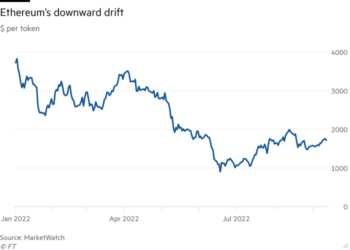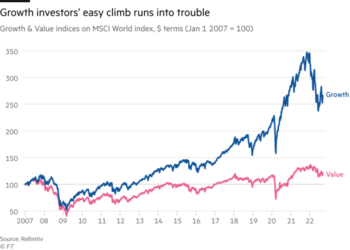If you were to pick a financial word of the year for 2021, “meme” might qualify. Remember the mania around GameStop, when frenzied retail buying and social media pushed the stock price up 2,700 per cent between January 8 and 28 — and caused 900,000 people to trade it on a single day?
Or the frenzy around AMC, the film group, or Peloton, the fitness equipment maker? Or how the trading platform Robinhood was briefly forced to pause some trading amid the deluge, prompting a congressional inquiry?
Now, however, the former US president Donald Trump — a master of social media frenzies — is at the centre of another twist on the meme theme. In October a special purpose acquisition company called Digital World Acquisition Group acquired the Trump Media and Technology Group. On Monday it announced that Congressman Devin Nunes will run it next year.
Nunes is a former dairy farmer with no prior experience in a C-suite, and DWAC also revealed this week that it was being investigated by regulators. Nonetheless the shares have surged 48 per cent this week, leaving them up sixfold from October, amid a frenzy of chatter on social media forums. Never mind that the company has no projected revenue or business strategy yet — unlike GameStop, say, which does at least have a recognisable, existing product.
So what should the wider investment community conclude? One lesson is that the DWAC saga shows the Trump brand’s continuing sway over some American market segments, not least the political ones. Another is the degree to which trillions of dollars of central bank liquidity support is creating market froth around all manner of assets, as some seasoned observers keep warning.
However, a third crucial point is that it reveals how our collective dash into cyber space is reshaping financial markets. For just as political discourse today is being defined by digital tribalism and tunnel vision, the market meme mania highlights the power of social networks and attention patterns. That Trump Spac saga is just one sign of a bigger structural shift.
To understand why, it is worth pondering some striking research from four American-based economists, Turan Bali, David Hirshleifer, Lin Peng and Yi Tang. This group recently crunched through a vast digital database about stock trading flows and social media networks to study the phenomena of so-called “lottery stocks” — or assets that occasionally produce outsized trading gains, albeit usually followed by losses, due to retail investor activity. Meme stocks might be viewed as a modern subset of this.
The nature of lottery stocks has long been a topic of debate in the behavioural finance community. Economists have generally parsed it through the lens of two key concepts: investor bias (or the idea that some investors love lottery stocks, since they view markets as a form of gambling), and information asymmetries (or the fact that retail investors lack the data that would let them make sensible decisions about pay-offs, making a mockery of the concept of rational economic actors).
However, the new research argues that a third factor may be even more crucial in analysing lottery stocks: “attention”, or the question of where and how investors choose to focus in an ecosystem drowning in data but plagued with echo chambers. Unsurprisingly, perhaps, the four economists contend that the stocks which exhibit the wildest price swings are those associated with explosive increases in google searches, news coverage and internet debates.
They also demonstrate a correlation between the density of social media networks — that is, cyber tribalism — and mania for lottery stocks. Less obviously, they highlight another finding: lottery stock mania almost always erupts around assets that feel proximate to investors, either because they are well-known brands, such as GameStop or Trump, and/or because they are geographically close to investors such as companies in urban centres. They write: “The lottery anomaly is amplified by high investor attention (proxied by high analyst coverage, salient earnings surprises, or recency of extreme positive returns) and intense social interactions (proxied by Facebook social connectedness or population density near firm headquarters).”
How should policymakers respond? There are no easy answers. A couple of months ago the Securities and Exchange Commission issued a report on the Robinhood debacle that called for better market monitoring, investor education and tweaks to market structures to make these more robust when trading surges. That is all sensible.
However, the SEC seems unlikely to do anything particularly radical. Instead, regulators seem to hope that taking the stance of cautious caveat emptor will eventually cause the meme mania to self-correct, if enough retail investors get their fingers burnt.
Maybe it will cool the frenzy: many meme stocks that surged earlier this year have recently underperformed. But the trend seems unlikely to disappear. After all, that digital genie known as social media networks cannot be stuffed back into the bottle any time soon, in politics or finance.
The real lesson for investors is that, in finance as in politics, they need to study attention patterns in cyber space as much as economic fundamentals to grasp where markets are moving, at least in the short term. Trump is now a market meme, in every sense.











